Scratch & Bash
:
Engines / Rolling Stock
Archbar? Bettendorf? Keep on Trucking!
Nov 15, 2006


By David Maynard |
Author
Bio
In this hobby we discuss trucks, the wheel sets that are under our train cars. But I have found that there is some uncertainly about the different types of trucks in use on people's railroads. Come learn just what might be under your rolling stock and maybe why it is there, and knowing why just might be a good thing.
|
In this hobby we discuss trucks, the wheel sets that are under our train cars. But I have found that there is some uncertainty about the different types of trucks. I figured I would describe the types of trucks that we normally see under our model freight cars to help us better understand what in under our rolling stock and maybe why. Now there were other types of freight trucks in use by the railroads at different times, but the major model manufacturers seem to concentrate on using the three types of trucks I will explained here. This is just a simple explanation to help shed a little light on the types of trucks we normally see on our models. I have a few links at the end of the article that will take you to some more detailed information if you are interested. The first type of freight truck to come into common use on the railroads was the Archbar truck. 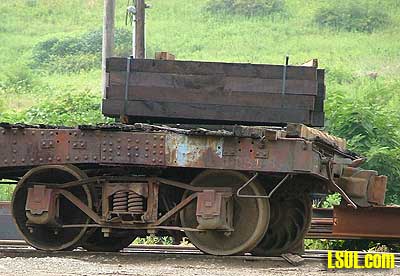
This simple truck was in common till around WWI. It was made mostly from channel and flat stock bolted together and so it was inexpensive to make. Unfortunately if a bolt worked loose or broke the whole truck would fail, and as freight cars became heavier this type of truck became prone to failure due to metal fatigue. If you look close you will notice the backsides of the wheels have ribs on them. These ribs were on cast iron wheels to help the wheel dissipate heat and to prevent cracking of the wheel in service. 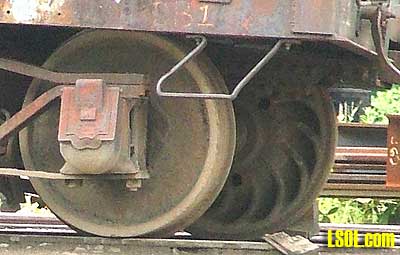
Archbar trucks were banned from interchange service in 1938 but found on MOW (Maintenance Of Way) & other captive-service cars long after that. (Captive service cars being cars that for some reason never left their home railroad. An example would be narrow gauge cars.)
The next type of truck we commonly see on our model freight cars is the Bettendorf truck. 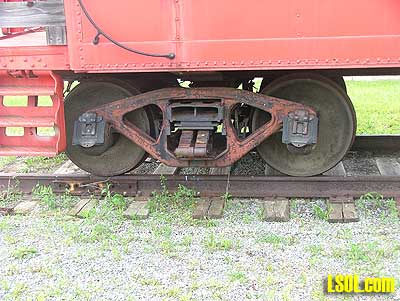
This truck features a cast side frame and was not prone to failure from metal fatigue. This kind of truck can have either a cast iron wheel or a cast and machined steel wheel. Both of these trucks had what is referred to as a friction bearing. The axle end rides in a solid bronze bearing and is lubricated with grease. 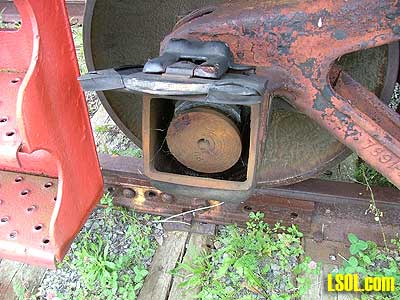
The journal box holds waste cotton to apply the grease to the axle end and bearing. The grease was poured into the waste cotton. If the journal is not sufficiently lubricated then the journal will become hot while running and this can cause a fire, or failure of the journal. So this kind of truck was outlawed on interchange service in 1966 for 100-ton cars, and in 1970 for all cars. And cast iron wheels were outlawed in interchange service in 1978. Again these kind of trucks can be found on MOW & other captive-service cars.
The freight truck now in service is the Barber S2, or Roller bearing truck. 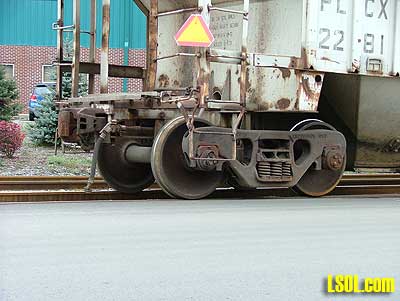
As the name implies the bearing, instead of having the steel axle slide on a bronze bearing, is actually a series of little rollers. A roller bearing is similar to a ball bearing assembly, and this reduces the friction and the heat caused by friction. I don't have a roller bearing torn apart to show here, but I did open up an old ball bearing so you can see the insides. 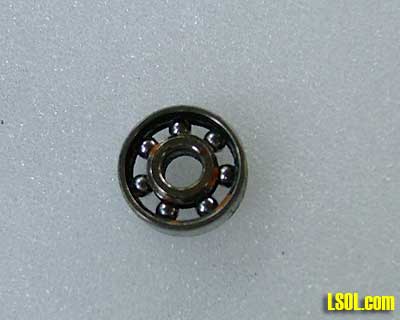
These bearings are sealed (except for when a model railroader tears them open) and do not need to be topped off with grease like the friction bearings do. The easiest way to identify a roller bearing truck is instead of a journal box they have bearing caps that turn with the wheels.
As a side note the coil springs on most trucks are replaced with leaf springs on crew cars like cabees (or cabooses if you prefer) to give a smoother ride to the train crews. And here are the same trucks as made by Aristocraft 
Archbar Truck
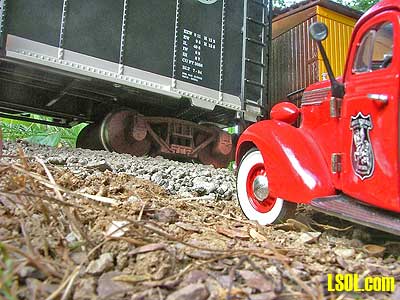
Bettendorf Truck
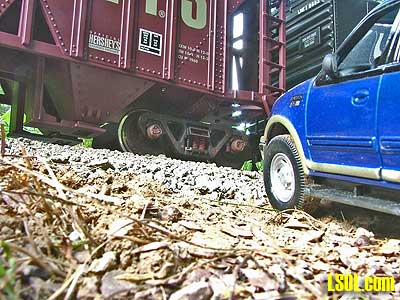
Barber S2 or Roller Bearing Truck
Interesting Links A Brief History of Freight Car Trucks - Click Here Bogie - Click Here Top of Page
|



